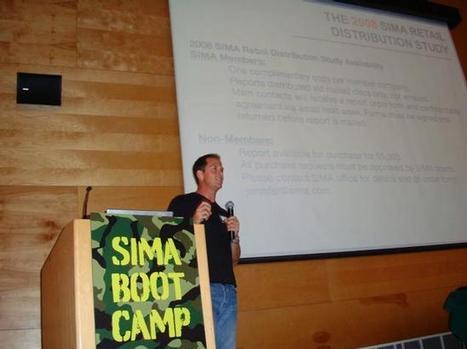The just-released 2008 SIMA Retail Distribution Study shows that sales in the core channels held up fairly well in the past two years compared to some other sectors of the economy with growth in shoe and accessories sales a bright spot.
SIMA President and Vans Vice President of Marketing Doug Palladini presented the findings of the 2008 SIMA Retail Distribution Study at the Oceanic Institute in Dana Point, California, Thursday during the SIMA Sales and Marketing Boot Camp.
The study, conducted by the Leisure Trends Group, measures the health of the surf and skate industry at core retail shops. It excludes mall-based, company/vertical, department and military retailers.
SIMA conducts the study every two years, starting in 2004, as a way for the industry to measure itself with facts surrounding its core channel of distribution.
“While research will never replace our instincts and cultural connections we have to our consumers in our industry, it’s one more piece we can use to make better business decisions,” said Palladini.
Here are some highlights:
• Surf industry sales in core shops declined in the 2008 to $5.32 billion, down from $5.51 billion in 2006. The 3.5% decline isn’t the best news, but when compared to other industries like automotive (down 18%), snowsports (down 5%), and movie box office (down 5%), the surf industry has proven to be fairly resilient. Including all retail distribution channels, the surf and skate industry is up 10% over the last five years, with estimated overall retail sales totaling $7.22 billion in 2008.
• In the core channel, apparel accounted for the majority of sales at $1.7 billion (down 0.8% from 2006). Women’s swim is the highest priced apparel item with an average price of $67 per unit.
• Footwear showed the largest growth across all categories with sales increasing 15.6% to $1.5 billion in 2008. Men’s and boy’s shoes and women’s sandals make up for the biggest share of this market.
• Accessories have also seen growth, mostly through sunglasses (the average shop sells 252 units at $80 each) and hats, with dufflebags/backpacks and watches close behind. Total accessories were up 13.1% in 2008 to $561 million versus 2006.
• Regionally, the Western region held the lion’s share of sales in 2008 (52% of total sales), while the coastal regions along the West (45% of all sales) and East coasts is where the bulk of the surf/skate business lies.
• Back-to-school continues to be the busiest time for sales, but the second quarter as kids get out of school and head into summer is showing to be more meaningful to consumers with a slight bump in sales.
• The number of brands carried across all categories in all stores is up.
• While the hardgoods business showed huge numbers in growth from 2004 to 2006, it is down 3.7% to $1.07 billion in 2008 from 2006. Skate decks still account for the bulk of overall hardgoods sales at 67%, with 91% of all retailers carrying skateboards.
• 45% of all retailers carry surfboards, while items like wakeboards, snowboards, inline and roller skates are down significantly. The percentage of hybrid boards (fish/egg/fun boards) is up from 2006 to 2008.
• Overall wetsuit sales are down 23% from 2006 to $88.8 million is sales, but first layer rashguards and wetsuit tops are up 49%. Fullsuits still account for the majority of wetsuit sales with an average retail price of $214 and the bulk of items sold during the winter.
• Of the 4,900 current surf and skate shops, only 60% of core retailers have computerized POS systems to track inventory. This may have changed since the last year, but surprisingly, many shop owners still account for inventory the old fashioned way by counting boxes in the back.
• Approximately 156 surf stores have closed since the 2006 study, a 7.4 percent decline.
The overall consensus of the study shows that while economic times are tough, surfers and skateboarders are loyal consumers.
“There is evidence that the industry has underlying support from core surfers and skaters,” said SIMA Executive Director Sean Smith. “Because passion drives us more than money, our industry is more likely to weather economic storms.”
For more on the study, please visit www.sima.com.






